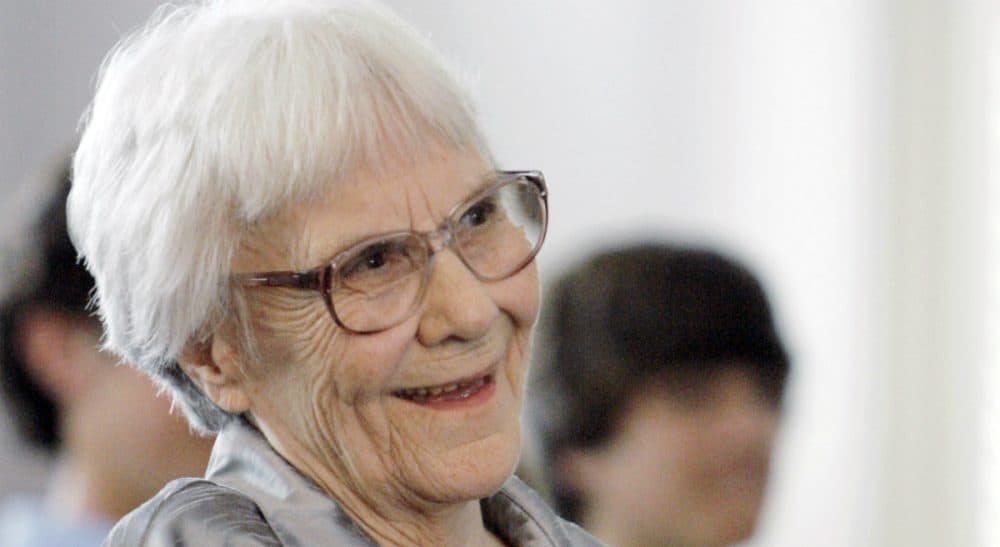Advertisement
Who Cares If It’s Good? Harper Lee’s Forthcoming Novel Will Be A Master Class In Craft

As the debate rages on about the discovery of Harper Lee's new novel, “Go Set a Watchman,” and the merits of publishing it, I'm tapping my fingers impatiently. I just want to read the book. Now!
“Watchman” was written a decade before Lee published “To Kill a Mockingbird,” in 1960. Though the publisher, HarperCollins, is playing its cards (a full flush, at this point) close to its mighty chest, we know this book is told from the perspective of Scout as an adult who returns to her Alabama hometown. After reading this manuscript-in-progress, Lee's editor, Tay Hohoff, reportedly encouraged her to try rewriting the book from the perspective of Scout as a young girl. “Mockingbird” went on to sell 40 million copies.
Few people, even those of us who are practicing, publishing novelists, truly understand the magic that happens during the writing and revision process when crafting a book. Lee's early work can teach us a great deal.
Despite the various people trumpeting otherwise, we can’t yet know when, why or how permission for publishing this manuscript was granted. Lee, who is 88 and in an assisted living facility, always claimed she wouldn't publish another book. By all accounts, however, she is still a sharp woman who speaks her mind. I'm in the camp that says her lawyer is probably looking out for Lee's best financial interests, protecting her, rather than preying upon her. Assisted living isn't cheap.
Those considerations aside, let's consider why this manuscript matters. While many are calling the new book a sequel to “Mockingbird,” that's false. Lee never had any intention of writing books in a series. She was no J.K. Rowling; she was simply trying to publish the best book she could. This doesn't mean that she stopped writing, only that she, as her sister had suggested, couldn't fathom writing a book that was better than “Mockingbird.”
Lee's savvy editor played an important role in guiding her to write “Mockingbird” the way she did. May all novelists be so lucky. Even without that editor's eye and polish, though, “Watchman” is a literary treasure that deserves to be read. Few people -- even those of us who are practicing, publishing novelists -- truly understand the magic that happens during the writing and revision process when crafting a book. Lee's early work can teach us a great deal.
The reasons so few people dare to persist in the arts, whether we're passionate about pottery, painting or writing, are two: Art doesn't pay the rent for most, and many of us, discouraged by less-than-dazzling early efforts, quit. In the case of new writers, especially, we produce crap. It can’t be helped. Art seldom blossoms fully-formed. Failed early efforts in any art form are part of the process, and, until you accept that, you're doomed to despair.
That’s where Lee’s manuscript will be invaluable. Many writers give up completely if we don't have examples of other writers who have struggled and failed before producing successful work. Reading “Watchman” and comparing it to “Mockingbird” will reveal how Lee went about constructing her greatest work. Whether “Watchman” stands on its own as a decent novel is almost irrelevant. It is a priceless craft lesson.
Reading “Watchman” would in no way diminish our opinion of Lee as one of our culture's greatest literary treasures. Far from it: the manuscript would likely heighten our respect for her artistry, the same way we develop a greater appreciation for artists when we're lucky enough to see their sketchbooks and earlier works.
Whether 'Watchman' stands on its own as a decent novel is almost irrelevant. It is a priceless craft lesson.
Last week, for instance, I saw “Madame Cezanne,” at the Metropolitan Museum of Art in New York. I spent close to an hour examining the artist's portraits and sketches of his wife, trying to perceive the nuances in color and brush strokes that made seemingly identical studies — say, of Madame Cezanne in a red dress, sitting in an armchair — so unique.
Cezanne, like all great artists, paid close attention to every detail of how pigment, brush stroke and white space work together to capture complex emotions on the canvas. Novelists produce pictures in words. Sometimes we must sketch out and rework the same scenes, pages or even entire books just to get the story right.
